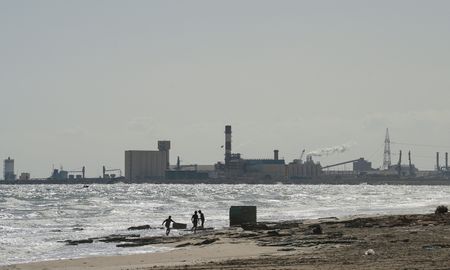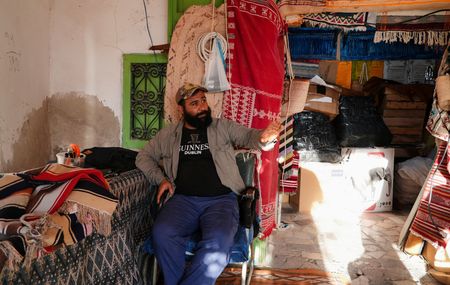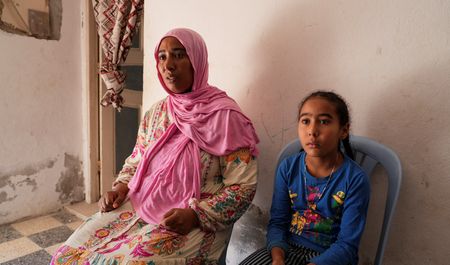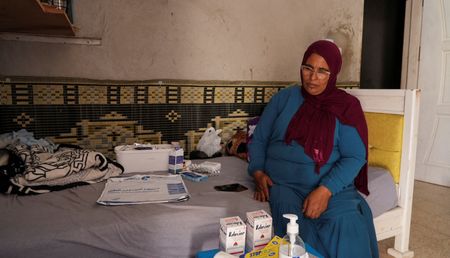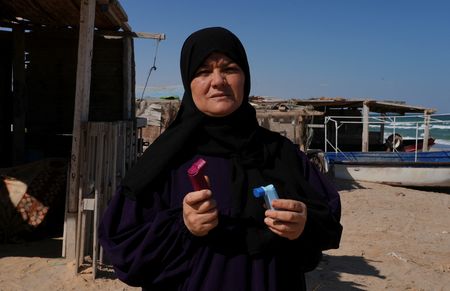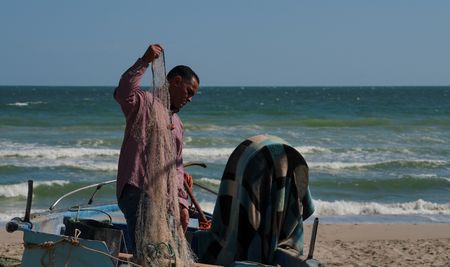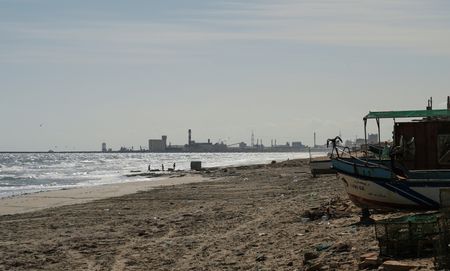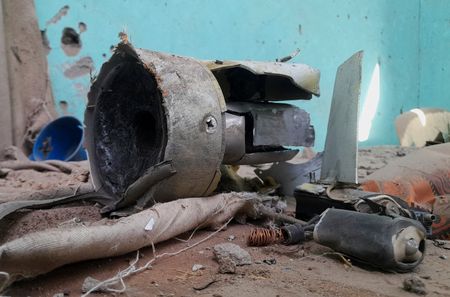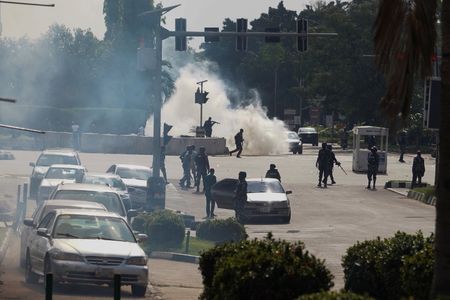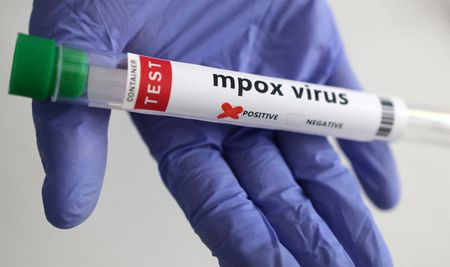By Tarek Amara
GABES, Tunisia (Reuters) -Beneath a smog-choked sky, the once-glistening waters of Gabes in southern Tunisia run dark with rust-coloured streaks. Trees are dying, fish vanishing and a suffocating stench infuses the air.
Known a generation ago as an ecological jewel of green oases, today the town is a toxic wasteland rife with cancer, respiratory illness and bone disease.
The culprit – residents, environmentalists and officials say – is a phosphates processing plant run by the state-owned Tunisian Chemical Group, or CGT, whose smokestacks loom over rubbish-strewn beaches.
This month, anger at the plant exploded into one of President Kais Saied’s biggest challenges since he took power in 2019. Police fired tear gas to disperse protesters who stormed the complex, and thousands returned to the streets last Wednesday.
Unlike other recent protests, those in Gabes are not demanding civic freedoms but rather an end to conditions they find unbearable.
“The plant has poisoned everything – the trees, the sea, the people,” Safouan Kbibieh, a local environmental activist, told Reuters during a recent visit. “Even Gabes’ pomegranates now taste like smoke.”
Saied has described conditions in Gabes as an “environmental assassination,” but blamed a previous government and called on ministries to fix chemical leaks.
CGT did not respond to questions sent by Reuters. Tunisia’s health ministry could not immediately comment.
‘LET US BREATHE’
Built a half-century ago, the Gabes complex is Tunisia’s biggest phosphates processing plant and accounts for over half of its output. The industry provides vital revenues for a government beset by soaring debt and weak growth.
But residents describe a heavy cost. In the towns of Ghannouch and Chott Essalem on the plant’s outskirts, it is hard to find families whose lives are not shaped by sickness and loss.
Rimel El-Haji, 45, described how her nine-year-old daughter started gasping and walking slower about a month ago, along with dozens of other students apparently affected by toxic emissions.
Today the girl relies on her mother to help with even simple movements – the result of neurological damage, Haji said, caused by suffocation.
“She can’t walk more than two steps,” Haji said. “She’s fading, like a flower under the burning sun.”
About two kilometers away, Amina Mansour, 53, lives in a modest brick house caked with dust and chemical residue. Inside, her shelves are packed with medicines to treat osteoporosis and the throat cancer she discovered six years ago.
“The doctors told me I need to leave this town to survive,” she says. “But where would we go? This is our home.”
She counted six relatives in her family diagnosed with cancer: “This pollution is slowly killing us,” she said.
Next door, her neighbour Maha Mahmoud clutches an inhaler she calls her “daily bread.”
“We no longer ask for food or jobs. We want one thing: dismantle the chemical units. Let us breathe,” she said.
Residents also blame the plant for a collapse of fishing stocks. One fisherman, Sassi Alaya, told Reuters his daily catch used to earn him up to 700 Tunisian dinars ($240) – but he is now lucky to make 20. After more than a quarter-century at sea, he’s turned to farming to feed his five children.
“The sea was everything — our income and dignity,” he said. “Now, it’s a nightmare.”
‘LIKE A WAR ZONE’
A July 2025 expert audit of the plant commissioned by CGT found “serious non-conformities relative to national standards and international requirements,” according to a copy seen by Reuters.
The complex had dumped 14,000-15,000 tons of phosphogypsum — a byproduct of processing phosphates — into the sea and along the coast a day, along with high emissions of ammonia, nitrogen oxides and sulfates, the audit said. The discharges had “greatly damaged marine seagrass beds and led to desertification of large marine areas”.
Phosphogypsum contains radium, which decays to form radon gas, the website of the U.S. Environmental Protection Agency says, noting that radium and radon are radioactive and can cause cancer. In the United States, the EPA requires that phosphogypsum be managed in engineered piles or stacks to limit public exposure from radon emissions.A lack of studies makes it hard to definitively link the pollution in Gabes to the diseases suffered by residents. But Kraiem Taoufik, a local doctor, confirmed he’d seen illnesses spike as conditions worsened.
“The city feels like a war zone,” he said. “Where we once saw a few cancer cases quarterly, now they appear daily. Residents live atop a chemical time bomb.”
Caught between the unrest and flagging state finances, authorities have vowed to rehabilitate the plant. But the plans have done little to soothe activists and residents who say they are at breaking point.
“For every ton of phosphate processed, a soul is lost,” Kbibieh, the environmental activist, said. “But we won’t abandon our land. We’ll keep fighting until Gabes can breathe again.”
(Reporting by Tarek Amara, Editing by Alexander Dziadosz and William Maclean)

